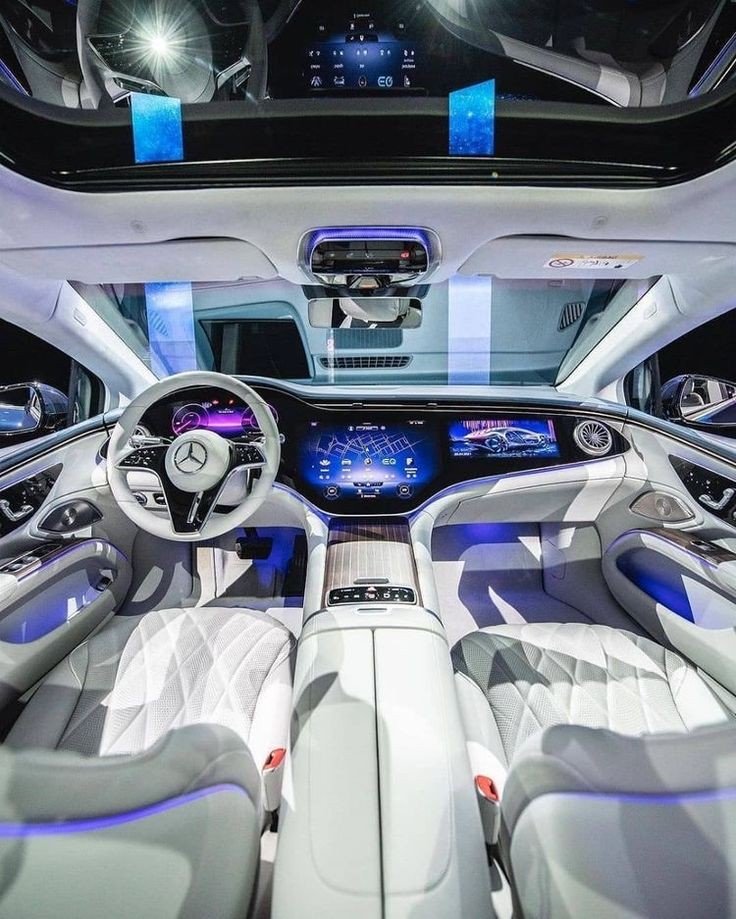
As the world moves towards cleaner and more sustainable energy sources, the synergy between electric vehicles (EVs) and solar power is becoming increasingly apparent. Both technologies are at the forefront of the green revolution, promising a future with reduced carbon emissions, lower energy costs, and a more sustainable planet. But how compatible are electric cars and solar power in practice? Can they truly form a “perfect match” in the quest for a greener future?
This detailed article will explore the intersection of these two transformative technologies, their benefits, challenges, and the potential they hold for shaping a sustainable transportation ecosystem.
1. Understanding the Basics: Electric Cars and Solar Power
What Are Electric Cars?
Electric vehicles (EVs) are powered by electricity rather than traditional internal combustion engines (ICEs) that use gasoline or diesel. EVs run on electric motors and are equipped with large battery packs that store the electrical energy required to drive the car. These batteries are charged by plugging the vehicle into an electric power source.
EVs come in various types, such as:
- Battery Electric Vehicles (BEVs): Fully electric vehicles that rely solely on electricity stored in batteries.
- Plug-in Hybrid Electric Vehicles (PHEVs): Vehicles that combine a conventional internal combustion engine with an electric motor and battery, allowing them to run on either electricity or fuel.
- Hybrid Electric Vehicles (HEVs): Vehicles that use both an internal combustion engine and an electric motor but cannot be plugged in; they rely on regenerative braking and the engine to charge the battery.
What is Solar Power?
Solar power harnesses energy from the sun using photovoltaic (PV) panels, converting sunlight into electricity. Solar energy is abundant, renewable, and emission-free, making it an ideal source of power for reducing greenhouse gas emissions and combating climate change.
Solar panels can be installed on residential rooftops, commercial buildings, and large solar farms to generate electricity for homes, businesses, and the grid. This electricity can be stored in batteries for later use or directly used to power electric appliances, including EVs.
2. The Growing Popularity of Electric Vehicles
Electric vehicles have seen a surge in popularity over the last decade, driven by advancements in battery technology, government incentives, and growing environmental awareness among consumers. Some key factors contributing to the rise of EVs include:
- Reduced Carbon Emissions: EVs produce no tailpipe emissions, significantly reducing the carbon footprint compared to traditional ICE vehicles. When charged with renewable energy, such as solar power, EVs become even greener.
- Lower Operating Costs: EVs have fewer moving parts than ICE vehicles, resulting in lower maintenance costs. Additionally, the cost of electricity is generally lower than gasoline, leading to savings over the vehicle’s lifetime.
- Technological Advancements: Improvements in battery technology have led to increased range, faster charging times, and reduced costs, making EVs more practical and affordable for a broader audience.
- Government Incentives and Regulations: Many countries offer tax credits, rebates, and other incentives to encourage the adoption of EVs. Additionally, stricter emission regulations are pushing automakers to invest in electric vehicle technology.
3. The Benefits of Combining Electric Cars with Solar Power
Integrating electric vehicles with solar power offers several compelling benefits, enhancing the sustainability and cost-effectiveness of both technologies:
3.1. Reduced Carbon Footprint
One of the most significant advantages of combining EVs with solar power is the potential to drastically reduce carbon emissions. While EVs produce no tailpipe emissions, their overall environmental impact depends on the source of the electricity used to charge them. Charging an EV with electricity generated from fossil fuels still contributes to greenhouse gas emissions.
However, by using solar power to charge EVs, owners can ensure that their vehicles run on clean, renewable energy, minimizing their carbon footprint. This combination can help achieve a near-zero emissions vehicle, making it a powerful tool in the fight against climate change.
3.2. Lower Energy Costs
Charging an electric car using solar energy can lead to significant cost savings. Homeowners with rooftop solar panels can use the electricity generated to power their homes and charge their EVs, reducing or even eliminating their reliance on the grid. This can lead to lower utility bills, as solar energy is free once the initial cost of the solar panels is covered.
Additionally, charging an EV during the day when solar panels produce the most electricity can further optimize energy use and reduce costs. Some utility companies also offer special time-of-use rates that provide cheaper electricity during off-peak hours, allowing EV owners with solar panels to maximize their savings.
3.3. Energy Independence
Integrating solar power with electric vehicles offers greater energy independence for homeowners. By generating their electricity, EV owners can reduce their reliance on the grid and fossil fuels, insulating themselves from rising energy prices and power outages. This energy independence can be particularly valuable in regions prone to natural disasters or frequent blackouts.
3.4. Enhanced Grid Stability
When EVs and solar power are combined, they can contribute to a more stable and resilient electrical grid. EVs can serve as distributed energy storage systems, storing excess solar energy generated during the day and feeding it back into the grid during periods of high demand. This process, known as vehicle-to-grid (V2G) technology, can help balance supply and demand, reduce grid strain, and prevent blackouts.
3.5. Promoting Renewable Energy Adoption
The integration of EVs with solar power can encourage further adoption of renewable energy. As more people switch to electric vehicles, the demand for clean, renewable electricity will increase. This, in turn, can spur investments in solar power infrastructure, contributing to a greener energy future.
4. Challenges of Integrating Electric Cars with Solar Power
While the combination of electric vehicles and solar power offers numerous benefits, there are also several challenges to consider:
4.1. High Initial Costs
The upfront cost of installing a solar power system and purchasing an electric vehicle can be prohibitive for some consumers. Although prices for both technologies have decreased in recent years, they still require a significant initial investment. However, this cost can be offset by long-term savings on fuel and energy bills, as well as government incentives.
4.2. Charging Infrastructure Limitations
Charging an electric vehicle using solar power at home requires the installation of a home EV charger, which can add to the overall cost. Additionally, public charging infrastructure may not always be powered by renewable energy, limiting the benefits of using solar power for EV charging.
4.3. Energy Storage and Battery Life
Solar panels generate electricity during the day when sunlight is available, but most EV owners charge their vehicles overnight. To bridge this gap, energy storage solutions such as home battery systems (e.g., Tesla Powerwall) are needed to store excess solar power generated during the day for use at night.
However, these battery storage systems can be expensive, and their lifespan may not match that of the solar panels or the EV. Additionally, frequent charging and discharging of EV batteries can impact their longevity.
4.4. Weather Dependency
Solar power generation is highly dependent on weather conditions and geographic location. Cloudy days, rain, and shorter daylight hours in winter can reduce the efficiency of solar panels, limiting their ability to generate sufficient electricity for home use and EV charging.
5. Technological Advancements Driving the Integration
Several technological advancements are helping to overcome the challenges associated with integrating electric vehicles and solar power, making this combination more feasible and attractive:
5.1. Improved Battery Technology
Advances in battery technology are playing a crucial role in the integration of EVs and solar power. Lithium-ion batteries, used in both EVs and home energy storage systems, are becoming more efficient, durable, and affordable. Newer battery chemistries, such as solid-state batteries, promise even greater energy density, faster charging times, and longer lifespans, which could further reduce the costs and enhance the practicality of combining EVs and solar power.
5.2. Smart Charging Solutions
Smart charging technology allows EV owners to optimize their charging schedules based on electricity prices, grid demand, and solar power availability. By using smart chargers and mobile apps, EV owners can program their vehicles to charge during peak solar generation hours or when electricity rates are lowest, maximizing cost savings and minimizing grid strain.
5.3. Vehicle-to-Grid (V2G) Technology
V2G technology enables electric vehicles to not only draw power from the grid but also return excess power back to it. This capability allows EVs to function as mobile energy storage units, providing valuable grid services such as peak shaving, load balancing, and emergency backup power. V2G technology can also enable homeowners to sell excess solar energy stored in their EV batteries back to the grid, creating a new revenue stream.
5.4. Solar Carports and Integrated Charging Solutions
Solar carports and integrated EV charging stations are becoming increasingly popular as they provide a convenient way to generate solar power and charge EVs in a single location. These structures can be installed in residential, commercial, and public spaces, offering shade for parked vehicles while generating electricity from solar panels installed on the roof.
6. Real-World Examples and Success Stories
Several countries and companies are already leveraging the synergy between electric vehicles and solar power, demonstrating the potential benefits of this combination:
6.1. The Netherlands: Solar-Powered Charging Stations
The Netherlands, a global leader in EV adoption, has installed thousands of solar-powered charging stations across the country. These stations harness solar energy to charge electric vehicles, reducing the reliance on grid electricity and promoting sustainable transportation.
6.2. Tesla: Solar Roof and Powerwall
Tesla, a pioneer in electric vehicles and renewable energy, offers a comprehensive solution that combines solar power with electric vehicles. Tesla’s Solar Roof and Powerwall battery storage system allow homeowners to generate and store solar energy, which can be used to charge their Tesla vehicles. This integrated approach provides energy independence, cost savings, and a lower carbon footprint.
6.3. Solar-Powered EV Fleets
Several companies and municipalities are adopting solar-powered EV fleets to reduce operational costs and emissions. For example, Amazon has committed to deploying 100,000 electric delivery vehicles by 2030, many of which will be charged using solar power. Similarly, several cities have invested in solar-powered electric buses to create greener public transportation systems.
7. The Future of Electric Cars and Solar Power
The future of transportation lies in sustainable solutions, and the combination of electric vehicles and solar power holds immense potential. As technology continues to evolve, we can expect to see further integration of EVs with renewable energy sources, making it easier and more cost-effective for consumers to adopt green transportation options.
7.1. Increased Accessibility and Affordability
As prices for solar panels, energy storage solutions, and electric vehicles continue to decrease, more consumers will be able to afford these technologies. Additionally, government incentives, subsidies, and tax credits will likely remain in place to encourage adoption, making the combination of EVs and solar power more accessible.
7.2. Enhanced Energy Management
Advancements in energy management systems, smart grids, and artificial intelligence will enable more efficient use of renewable energy for EV charging. These systems will optimize energy distribution, reduce wastage, and ensure a stable and reliable power supply for homes and vehicles.
7.3. Greater Renewable Energy Integration
As the global push for renewable energy continues, more countries and cities will invest in solar infrastructure and EV charging networks. This expansion will create a supportive ecosystem that encourages the growth of both electric vehicles and solar power, driving further innovation and collaboration in the green energy sector.
A Perfect Sustainable Match?
Electric vehicles and solar power represent a promising combination in the pursuit of a sustainable future. Together, they offer a path toward zero-emission transportation, reduced dependence on fossil fuels, and lower energy costs. While there are challenges to overcome, technological advancements and growing consumer demand for green solutions are steadily paving the way for a future where electric cars and solar power form a perfect match.
As we look ahead, the synergy between these two technologies will likely continue to grow, transforming the way we think about energy, transportation, and sustainability. For consumers, businesses, and governments alike, embracing the potential of EVs and solar power offers a compelling opportunity to make a positive impact on our planet and drive forward the green revolution,
ALSO READ: India’s Automotive Giants Expand Dealership Networks







